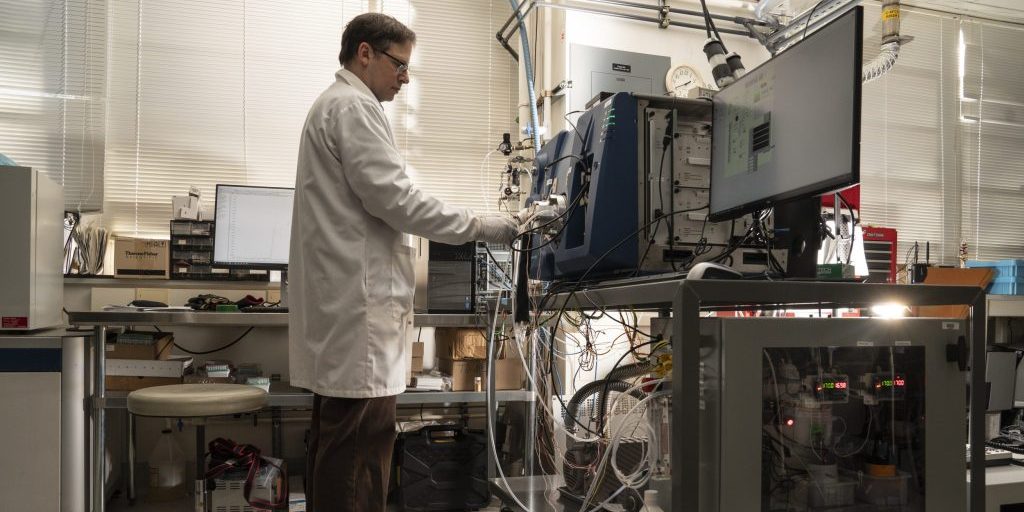For decades, airports around the nation have employed sensitive canine noses to detect concealed explosives. While this four-legged fleet has been effective and efficient, researchers have yet to build a mechanical method that can mimic their abilities.
Sasha Wrobel and Ta-Hsuan Ong are leading a team of researchers from Lincoln Laboratory’s Biological and Chemical Technologies Group to try to find a way. The team’s research builds on the Laboratory’s ongoing work to create and use a mass spectrometer to help train bomb-sniffing dogs, a project that is supported by the Department of Homeland Security’s (DHS’s) Science and Technology Directorate (S&T) Detection Canine Program. Wrobel and Ong are using the spectrometer to measure explosive vapors in order to understand the requirements for creating an operational explosive detection system. This system would work in tandem with the canine fleet to improve current airport security systems.


